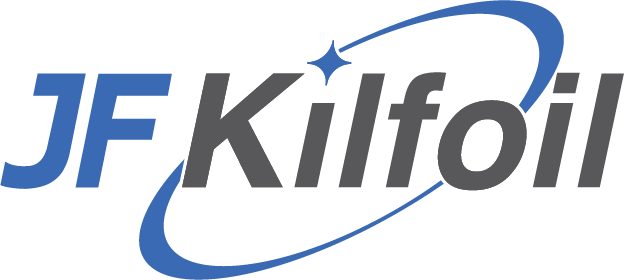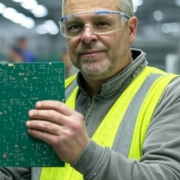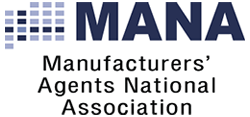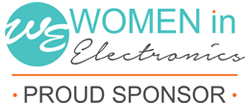Newsletter February 2025 Edition
The Building Blocks of Hope: A New Era for U.S. Manufacturing
Reshoring, Innovation, and Investments Are Creating a Bright Future for American Production
by Tim Kilfoil
Have you felt a growing sense of hope in manufacturing and production over the past few months? No? Well, can I convince you that it might be coming sooner than we expected just a few months ago? Count me as optimistic. In the past few years, we’ve witnessed a turn in manufacturing, bringing tech-specific manufacturing back to the homefront. We can see this change taking the form of new semiconductor fabs that are breaking ground or have broken ground in several states or in new assemblies being brought back to be built here. This was brought on by other changes in relatively short order: a visible lack of resiliency in our supply chain, the overnight onset of a pandemic, and the carry-on effects of tariffs started a few years earlier.
But what gives me the feeling that we may have turned the corner toward a bright future? Let me put it into terms we are all familiar with- building blocks. You played with them as a kid, you played with them as an adult. But are the building blocks there to support a resurgence in manufacturing the way we would all like to see? Well, let’s take a look at it together, shall we?
For the necessary blocks to build with, let’s look first at The Environment. When you consider the late 1990s, the concept of Outsourcing / Off-Shoring became the norm. It was a time when we allowed ourselves to believe the future was not in manufacturing at all. We had been told that the path toward continued cost improvement meant the Asian countries would make better factories than we would. Well, we aren’t hearing that anymore. These days, we are consistently hearing the refrain of re-shoring, the reverse migration of outsourced assemblies coming back to our own shores or at least onto our continent. I would count this as a favorable environment and a check in the column toward “a growing sense of hope.”
For other building blocks, let’s consider Realizations- things we now know but didn’t know before. These would be things like “supply chain vulnerabilities.” If there is one thing we are painfully aware of now, it would be the weakness that was exposed during the pandemic and the related supply chain woes. We have placed new value on domestic production for a whole list of items to which we may not have given sufficient consideration: microprocessors, baby formula, medicines as examples. In retrospect, we now realize some of these products we so willingly handed off to other countries to manage are critical to our success as a country. Count this as a good reason for moving production back into our country and a move toward domestic manufacturing.
What about Competitiveness as a building block? Turns out, yes, we can be competitive. AI and automation have proven they can transform labor-heavy operations into more efficient and more precise operations, allowing domestic production to approach a point where total cost difference can be acceptable. Mix in some government incentives such as the CHIPS Act, construction starts on additional domestic capabilities, and the willingness to encourage vocational training through community colleges, and- wow- it looks like we actually have many of the pieces we need to forge a new manufacturing path right here.
Is the government providing any building blocks? Yes, and this goes beyond even the CHIPS Act, which grabs the headlines. There are new local tax incentives and state grants that are encouraging companies to re-invest in American manufacturing facilities. This is where much of the support will be developed, in fact, and it is where most of the jobs across the country will be delivered. Sure, the big names will get the Hero Pictures on the websites and magazines. But when the local manufacturers supporting companies all across the country get in on the action, this is where the national manufacturing engine starts to hum. A growing national economy should be attached to it.
What else can we use to support these blocks and the foundations for a new manufacturing reality? Take a look at the current backdrop against which this manufacturing lift will play. Parallel to manufacturing, the technology sector in the U.S. continues to innovate and provide economic growth. Things like the growing category of AI and Machine Learning, the slow-growing but steadily improving Renewable Energy Technologies, the converging technologies at play within Biotech and Health Tech, and the ever-increasing need to protect individuals, municipalities, and companies under the heading of Cybersecurity. We are moving forward on every one of these categories, whether you hear it, see it or feel it. And they all take new technology and hardware to build out their respective systems.
How about the people, the general public—is this something they want? Job creation begets broader economic growth. Growth in an economy that people can participate in leads to Community Revitalization. Our own shared history shows that Manufacturing can turn places on a map into communities. I would say it can also turn communities that have suffered from deindustrialization into RE-industrialization. Innovation is a culture. It will spawn services and industries that are often new and wholly unpredictable.
Hope is not a plan, as the adage says. But while a sense of hope in U.S. manufacturing and technology may seem like a mirage, it is actually grounded in tangible developments and real dollar investments- both public and private. There are always tensions; there are always changes, there are always things that try to get in the way. I would suggest, however, that a robust path forward has already been paved with the things we have seen developing over the past couple of years. If nothing else, take this momentum as a sign that there are others out there as interested in a lift to this market as you are. No one can predict what will happen, as many pieces must come together. But we can certainly define our response to the things we see. I will put another check in the column toward “a growing sense of hope.”
——








